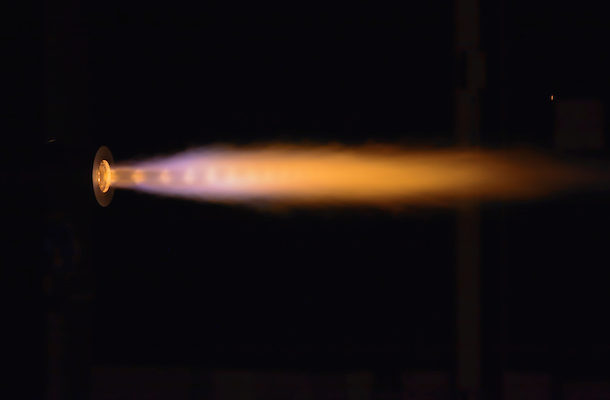Time for a New Space strategy for Defence

Space is opening up commercially and militarily which Adam Gilmour, CEO & Founder of Gilmour Space Technologies, suggests is the perfect time for Australian Defence to look at the capability of home-grown companies for new technologies.
The Australian government, in its 2016 Defence White Paper, reported that it would like the defence industry to become a key contributor to the economy alongside industries like mining, farming and tourism. The goal, according to an industry spokesperson, would be to make everything in Australia “except a 5th generation fighter”.
Great intentions; except that there is a fundamental disconnect between these stated ambitions and what is actually happening on the ground.
On the one hand, we have a defence force that is able and willing to acquire state-of-the-art technologies for the protection of our nation. On the other hand, almost all of that spending is going to defence companies (or “primes”) from other countries like the US, UK and France, whose governments have (over the last decades) invested hundreds of billions of dollars into building up their local capabilities in defence research and products.
It’s not all a one-way street, of course. In return for our multi-billion-dollar spending on defence products and services, tens of thousands of Australians are given jobs in prime subsidiaries and manufacturing facilities in Australia. They have the opportunity to learn from, and supply to, these experienced and established companies, which in turn have the capability to supply Australia’s defence force with any/all state-of-the-art technologies, including space launch and satellites.
So what’s the problem?
Besides the fact that the majority of these profits are sent back (to the US, UK, France, etc) and that intellectual property is retained by the primes, we’re still very much behind in our broader strategy of building a sustainable and self-reliant defence industry in Australia.
It’s a bit like a new landowner letting others farm on his land, and then buying the produce from them. At some stage, things will need to change.
A New Beginning for Space
With a space agency yet to be launched, and limited domestic capability in satellites or launch (at least commercially), Australia today has a clean slate for building its own infrastructure and space capabilities for the future.
One successful model we could replicate could be the US Defense Advanced Research Projects Agency (DARPA), which provides funding and testbeds for very early-stage technologies, and then follow-on support and grants as the technology matures. Indeed, DARPA has funded many commercially viable space technologies, including Boeing’s new XS-1, a semi-reusable space plane (now at the second stage of its technology grant).
Australia could start developing its own indigenous deep defence technologies by focusing on a few niche areas, and funding them sufficiently to a stage where they are able to compete globally against better funded and more established players in the industry.
At first glance, the Defence Innovation Hub would appear to be this solution. In practice, however, it is very much focused on short-term, close-to-market technologies (at Technology Readiness Levels of 5 and beyond) that are expected to be completed within 12 months.
In order to compete with global primes, Australian companies will need to develop high/deep technologies, which would take a lot longer than 12 months to evolve. It is also worth noting that the recent Defence Cooperative Research Center (CRC) on autonomous vehicles is being headed by three primes (for land, sea and air).
Here are just two indigenous space-based technologies that Australia could be investing in for the future:
Tactical satellite launches. There is a growing concern about space warfare, especially as Australia’s defence relies heavily on space-based communications and positioning satellites. With our allies looking for ways to quickly redeploy small satellites – e.g. to re-establish communications, among other things – this could be an area (with significant export potential) for Australia to tap into.
New Space solutions for existing problems. Australia has procured seven MQ-4C Triton unmanned aerial vehicles to provide active surveillance (against illegal fishing, people smuggling and military aggressors) for our northern coastline. These UAVs are impressive, with a flight duration of 30 hours, range of 15,000+ Km and the ability to fly at 65,000 feet and see 450 Km away. They also cost US$200 million each; with the total program purported to be over $2 billion.
One lower cost alternative could be to assemble a fleet of 12 small surveillance satellites, launching them into a 14 degree inclination orbit (such that a satellite would fly over our northern waters every 10 minutes). These satellites could be built and launched in Australia by Australian companies for less than the cost of one MQ-4C. What’s more, once they are up, you wouldn’t need to service, refuel, or pilot them.
With space opening up commercially and militarily, I believe it’s high time for Australian Defence to take a serious look at what capabilities they can now acquire and build within our budding space industry.
It’s time to invest in Australia.
Adam Gilmour is the CEO & Founder of Gilmour Space Technologies, a new space company that is pioneering low-cost rocket development and launch in Australia. In his previous life, Adam spent two decades managing a US$1.2 billion regional sales business for a large MNC bank. An avid space fan with a deep knowledge of space propulsion systems, his inspiration for change came when Scaled Composites won the 2004 X-Prize with SpaceShipOne (demonstrating just how affordable spaceflight could be). Today, he is leading a growing team of talented engineers on a mission to develop and deliver truly low-cost access to space.













